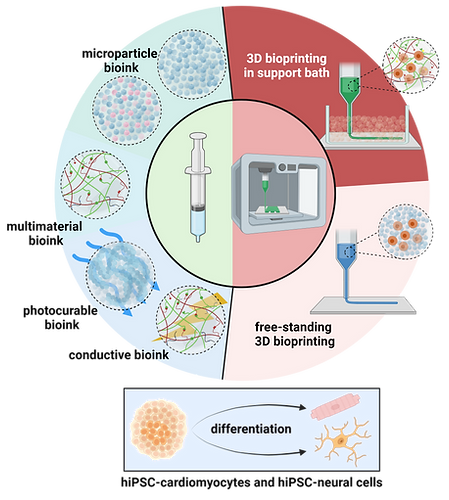
PROJECTS
I work at the interface of materials science and stem cell biology to address major challenges in healthcare and life science.

Electrically conductive materials for biological applications
One of the central themes of my research over the last years has been elucidating the interplay between electrical properties of the extracellular matrix on cellular behavior with a focus on excitable cells.
Excitable cells are electrically active and generate action potentials thereby communicating with their neighboring cells and performing their physiological action. We found that different electrical properties of their matrices change how these cells respond, grow, and evolve.
Tools to generate Systems that address challenges in Life Science and Healthcare.

My research and technology utilize biomaterials, stem cells, and 3D bioprinting to create implants, engineered tissues, scaffolds, and tissue models. These systems are then applied for tissue regeneration and tissue engineering, to study the physiology and pathology of tissues, or for pharmaceutical screenings. Trust us to provide you with the latest advancements in the field of tissue engineering.